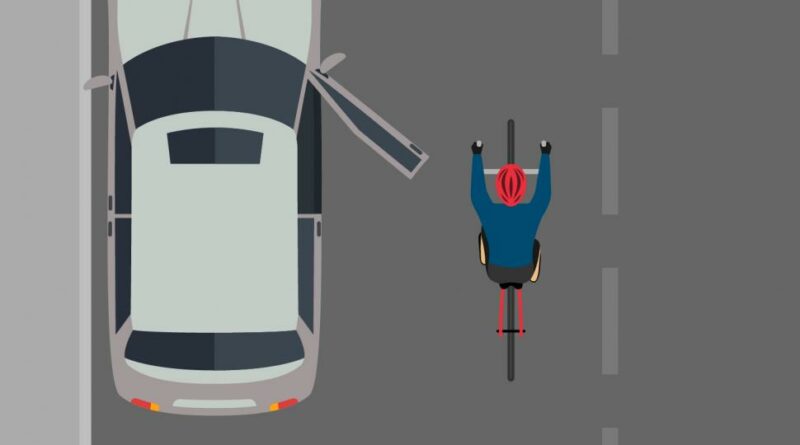Don’t Get Doored!
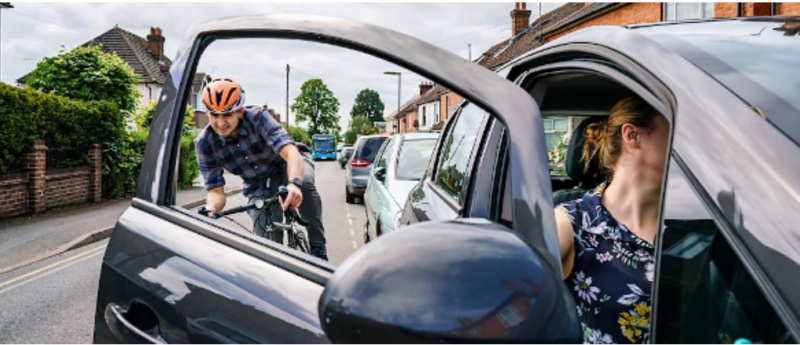
I am sure that we have all encountered similar situations to this, but hopefully near misses, because we then had time and space to avoid a crash. However there are some of our club members who have not been so lucky, came off their bikes, suffering injury – including hospitalisation, and/or bike damage. But why does it happen? We should all be aware of the dangers, but we still put ourselves in the danger zone when the situation can be avoided.
So what is the danger zone?
This is one situation where the new Highway Code has got it wrong!
A little while back, Frank Kippen sent me – and I expect most of you – via an Anerley Whats App message – a link to the new 2022 version of the Highway Code. This was because there have been some changes which apply to us cyclists. The link being https://www.highwaycodeuk.co.uk/
The last time that I studied the Highway Code was prior to an advanced test over 40 years ago!
Road Safety often comes up at Club Committee meetings, and being one of our Ride Leaders I thought I ought to get upto date on the very latest changes. I must say I was very disappointed. The Highway Code of the 1970s was far more informative about safer riding/driving, and hence superior to the 2022 version. Judge this for your selves:

The safer cycling bible is the book, Cyclecraft, which I first read in about 1978 and it continues to be the recommended reading by Cycle UK and every other authorities on cycling. It says that when passing parked vehicles, and I quote ” You should pass any vehicle with at least1.5 metres (5 feet) to spare, just in case a door is thrown open.” Note – at least1.5 metres (5 feet) to spare.
It goes on to say that this should be extended to 2 metres/7 feet when passing buses, lorries and other high sided vehicles because they obscure pedestrians who might step out because they cannot see oncoming traffic.
(Ask Tom Tom about the lady with a child in a push chair – the pushchair suddenly appearing from between parked vehicles!)
But now the new, 2022 Highway Code, reduces this safety margin to- “. . . . . leave enough room (a door’s width or 1 metre) if a car door is opened ” -( my italics).
Perhaps I am wrong in thinking that now, with much bigger cars with wider doors, but not wider roads, the simple solution was to give more space to motor vehicles at the expense of reduced safety to cyclists.
I still put my faith in the better advice provided in Cyclecraft, which as it says on the cover, is recommended as the National Cycle Training Standard.
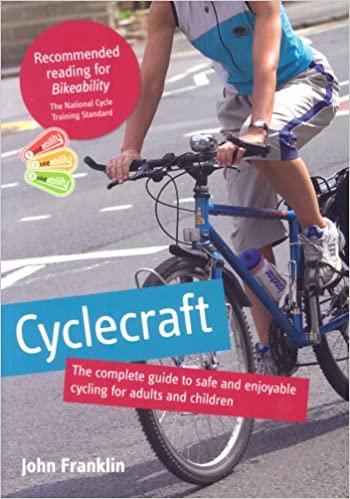
But perhaps I can help by adding a bit of meaning to this 1 and 1.5+ metre distancing, see below.
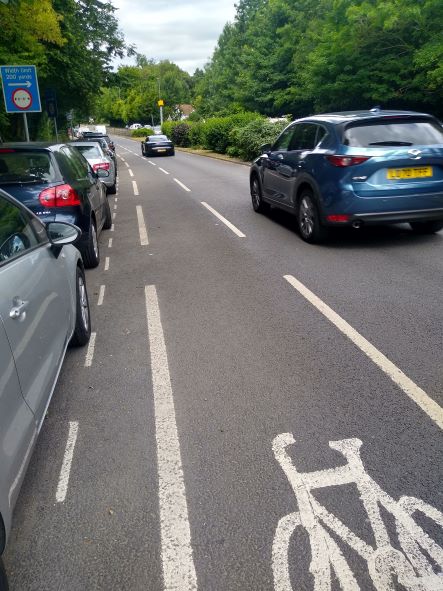
You should all recognise this nice, well spaced and wide, cycle lane as you leave Redhill on the A23 towards Croydon. If only more were like this! So when heading back home after a long cycle ride, where should you be in relation to the cycle lane?
Being of an older vintage who still does not understand how wide 1 metre is, I had to get the tape measure out, only to find that with a minimum of 5, good old Imperial Feet for safety reasons, I should, ideally be cycling about here! With this line of tightly packed cars, it will also give me a better view of a car driver walking out onto the roadway when returning to their car – with or without a child in a push chair!
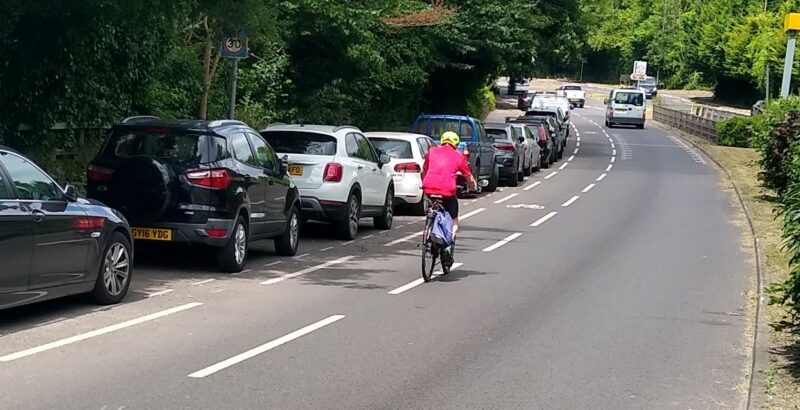
Being safety conscious and using my handle bar mirror, I can scan the traffic coming up behind without having to keep look over my shoulder. Hence, when I see a vehicle approaching to overtake, I could if necessary, temporarily move over to left, into the danger zone – (below) – and then out again when safer to do so.

Note: – I am not suggesting that we should always ride out where I am in the top photo. I am just trying to illustrate the difference between 1 metre and 1.5 metres, and their appropriate uses. As in all situations we have to make decisions, based on knowledge/experience/training/etc, to take the safest positions for each and every, ever changing situation. But where ever practical 1.5 metres is safer than the new and reduced 1 metre, Highway Code recommendation.
Des

